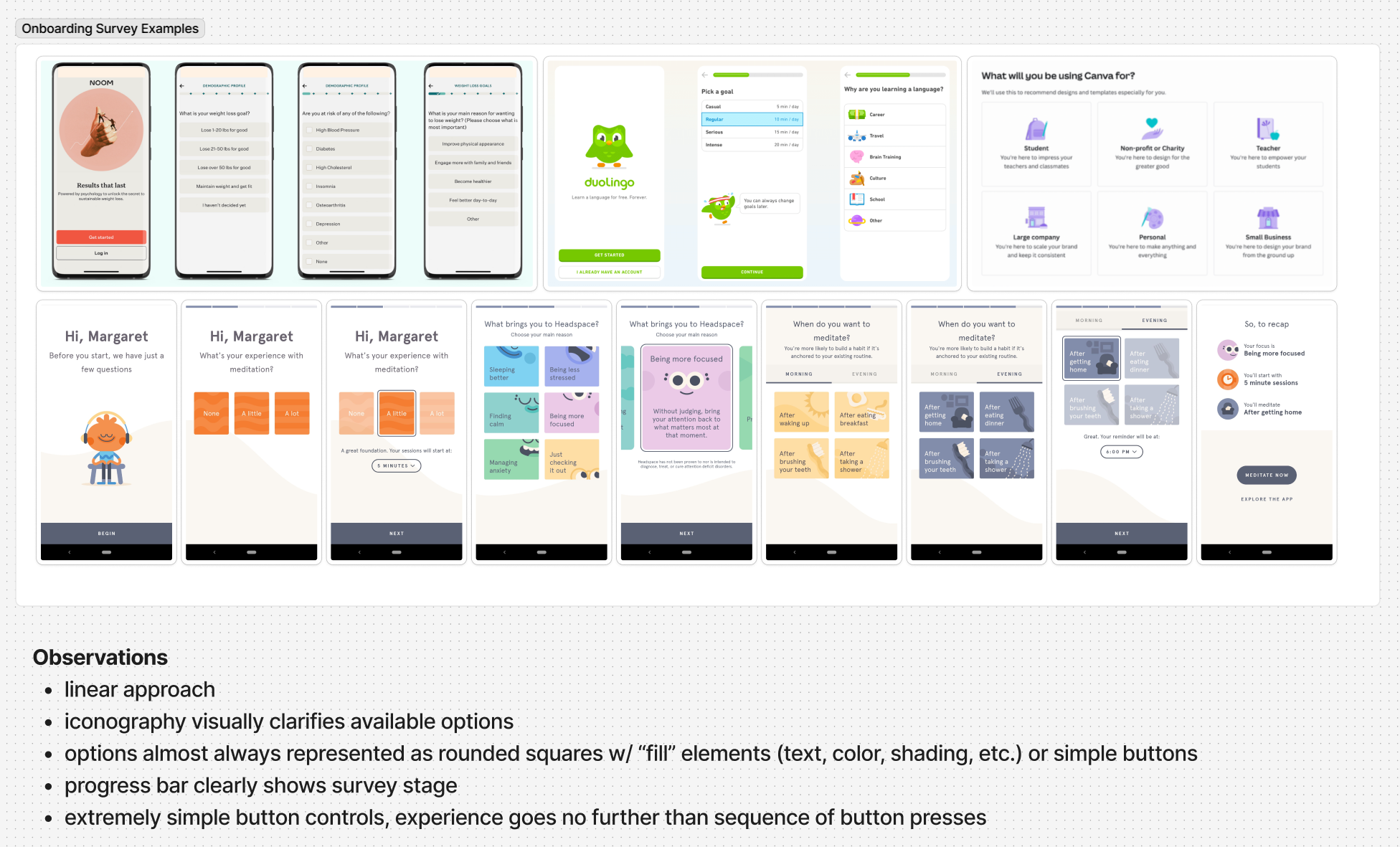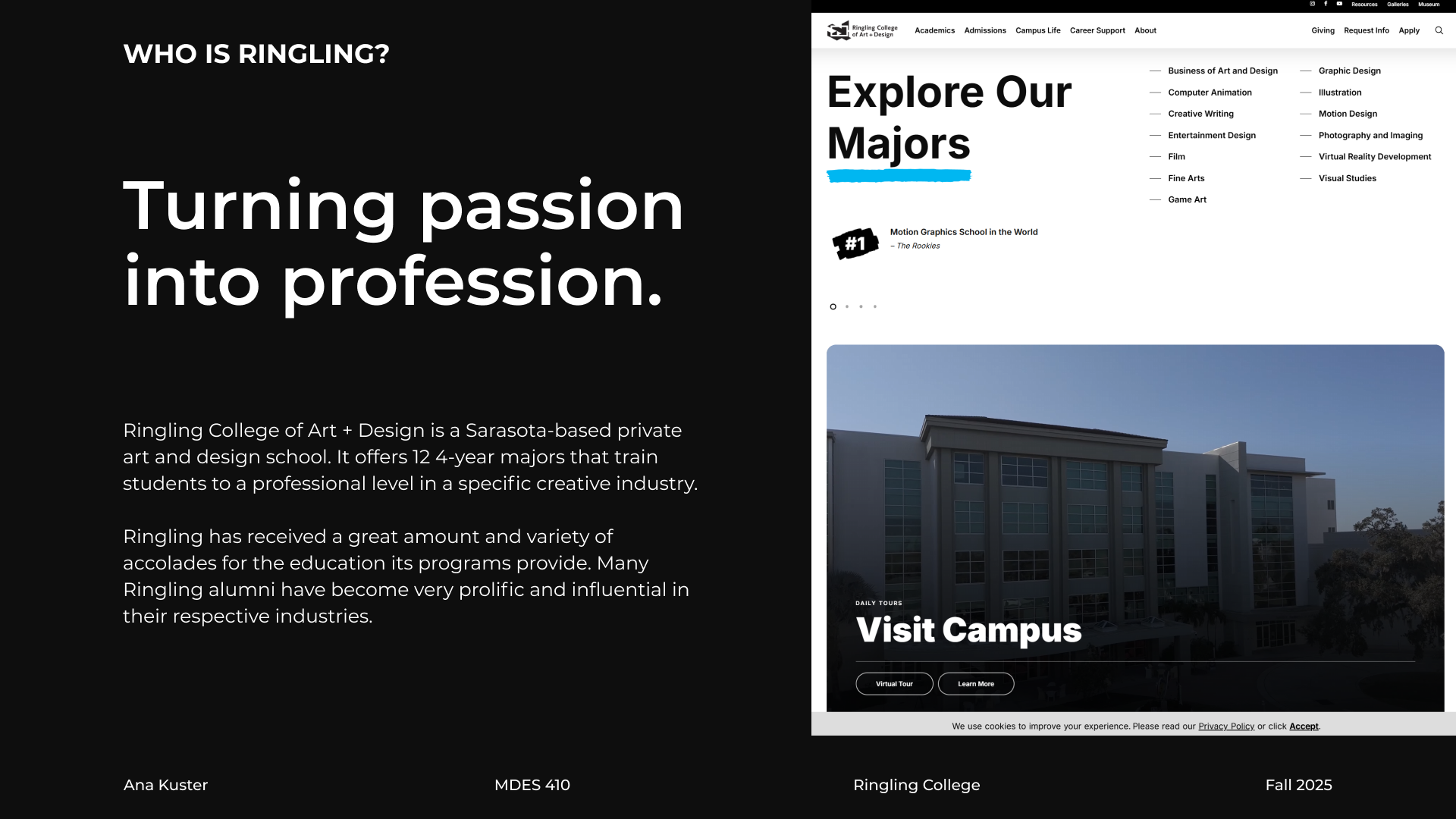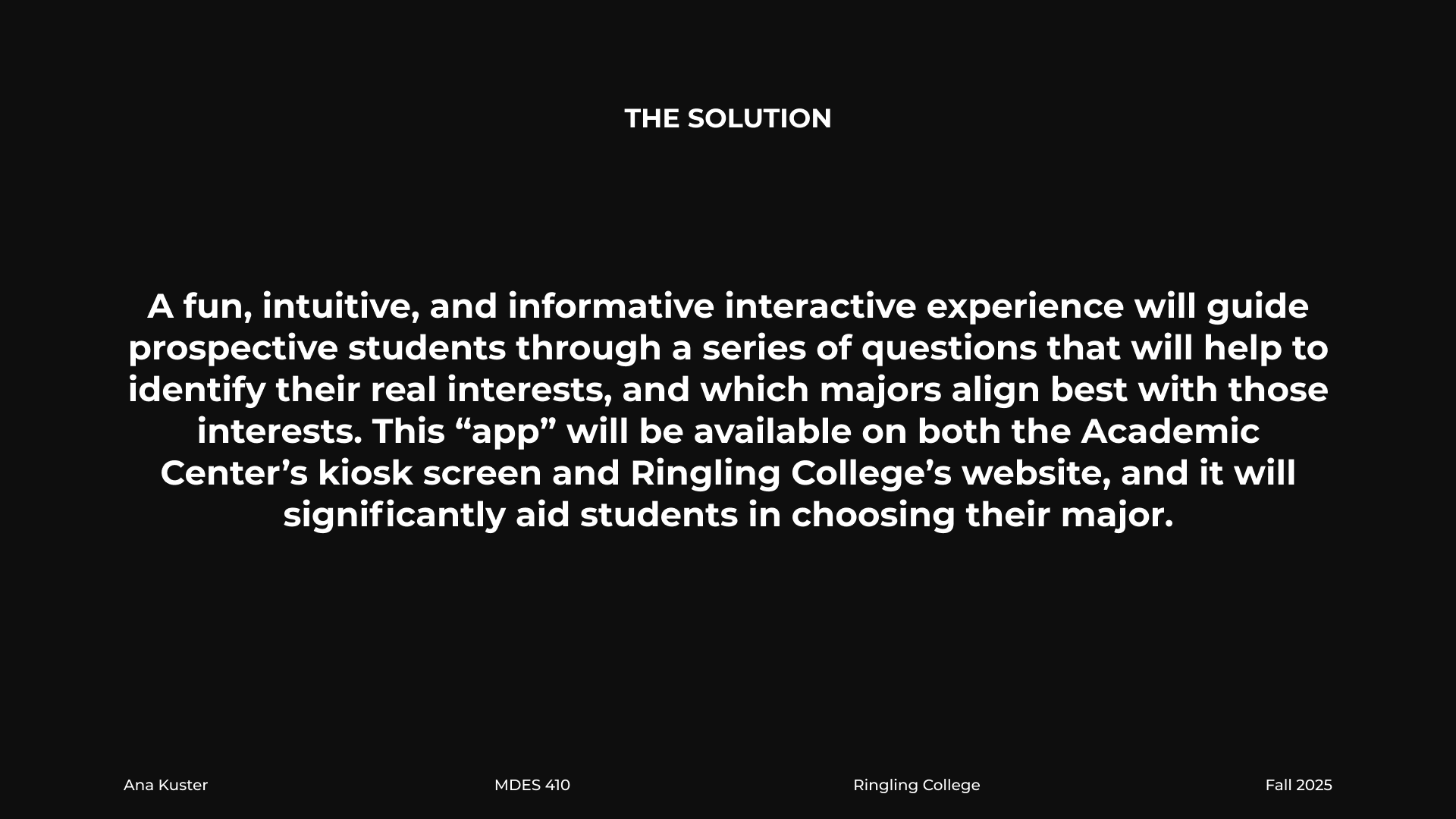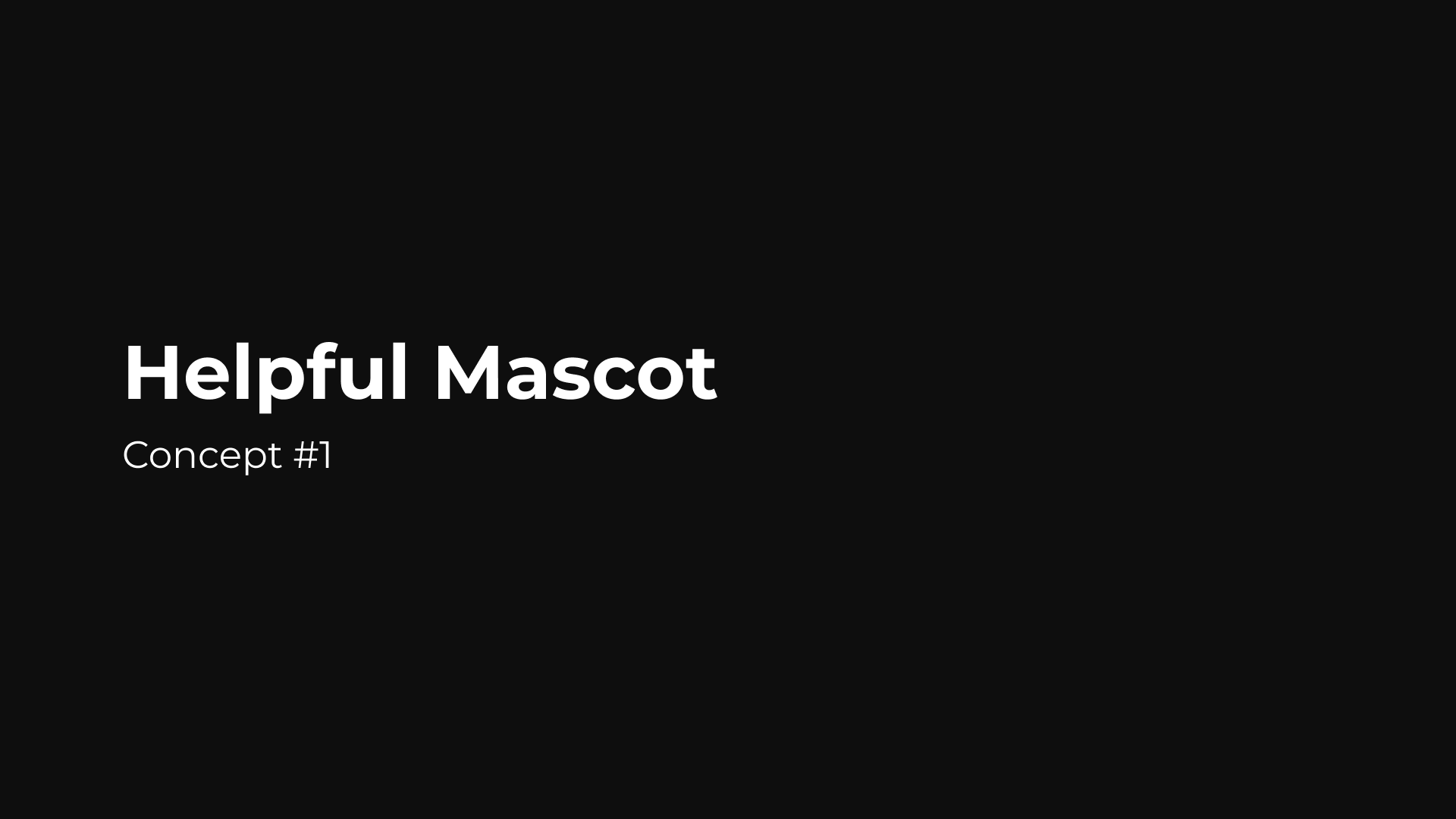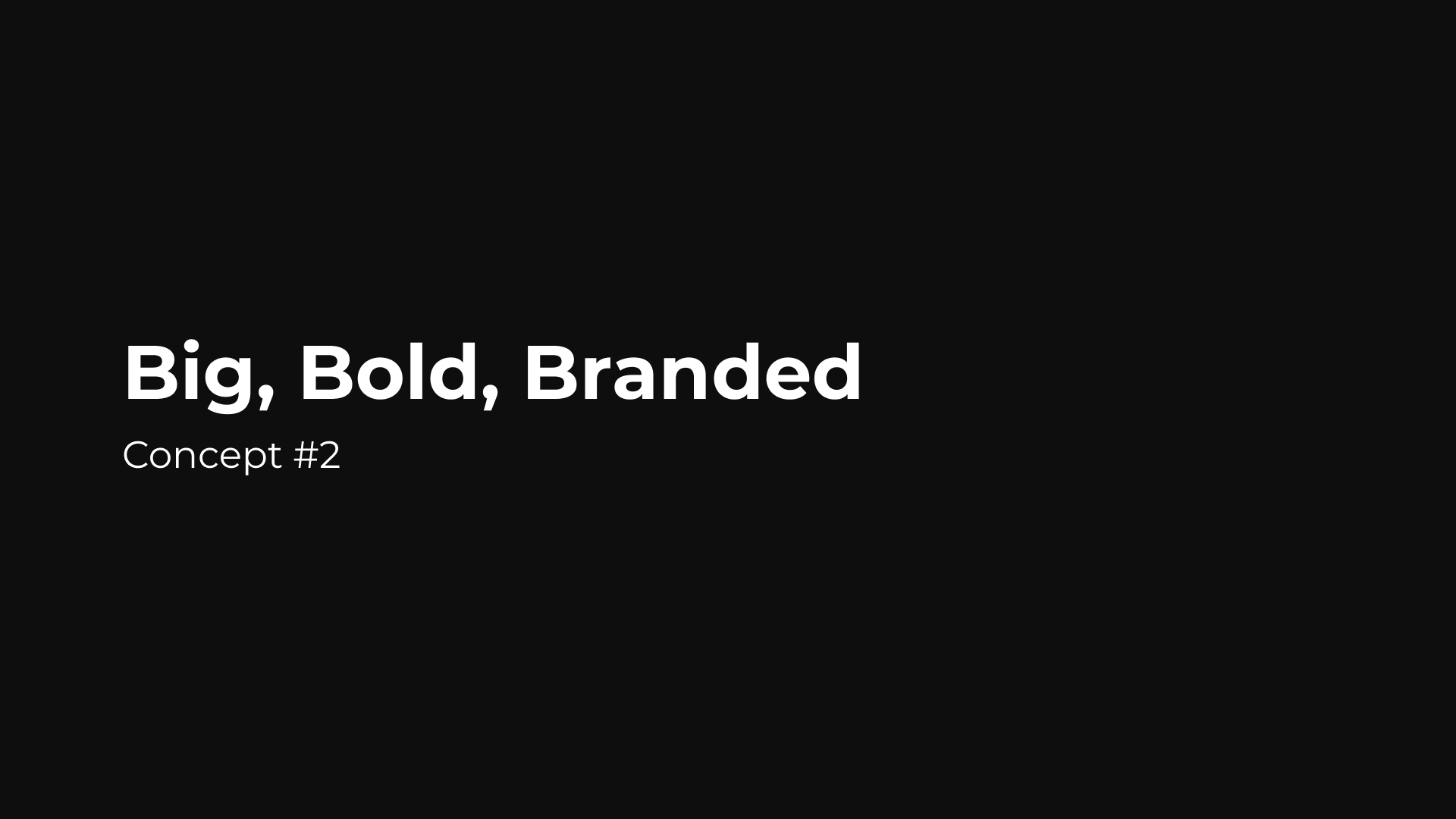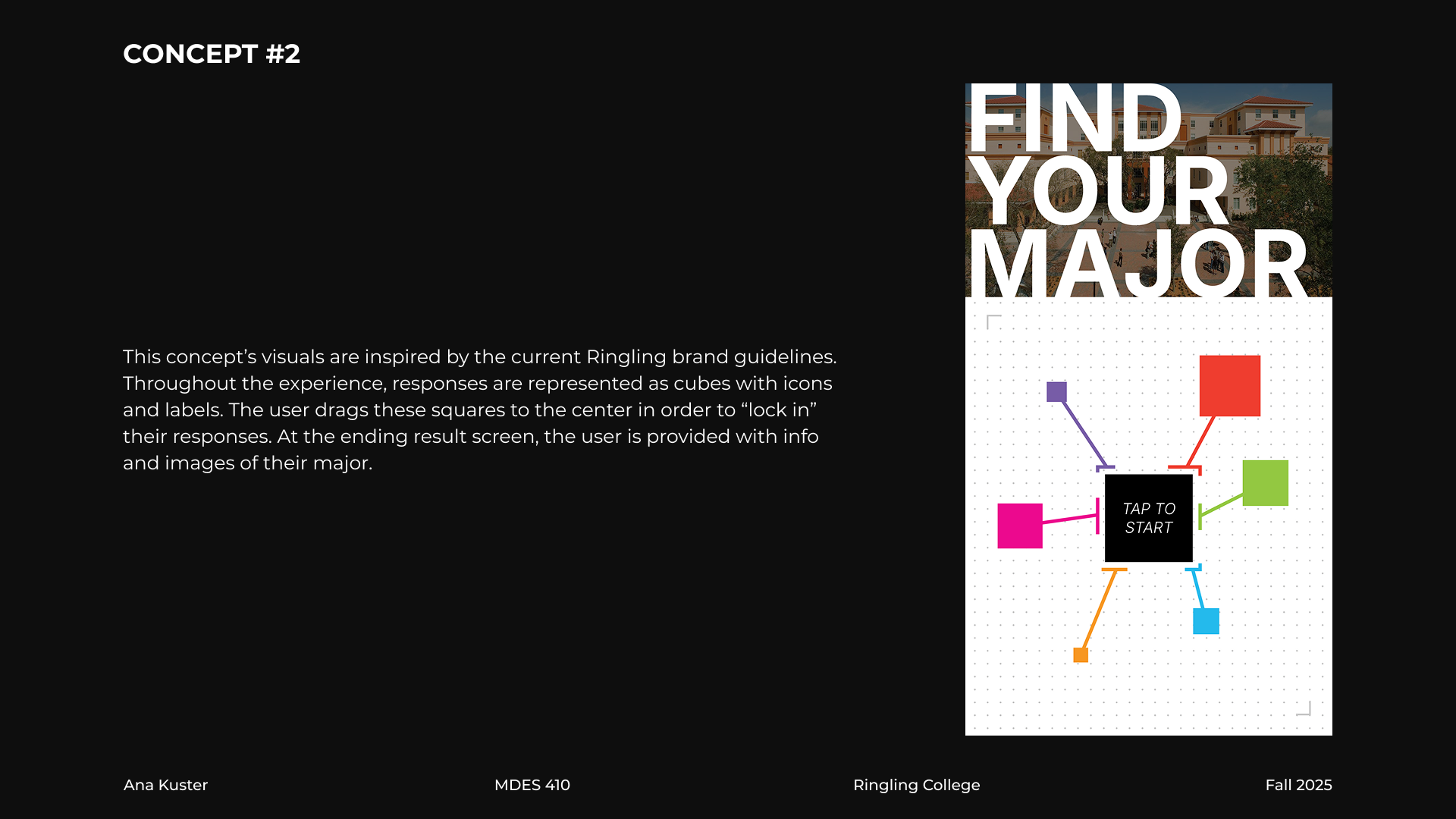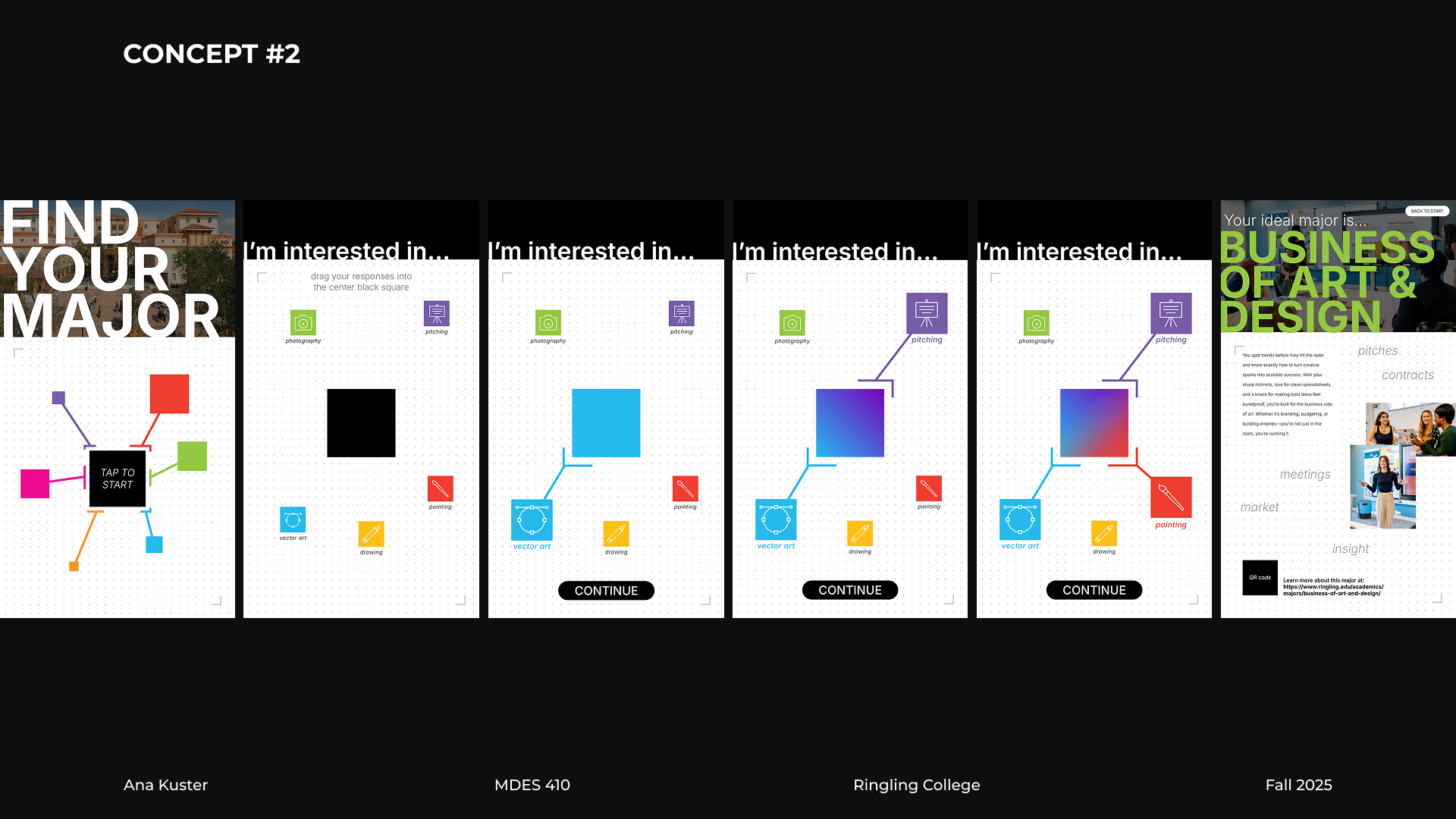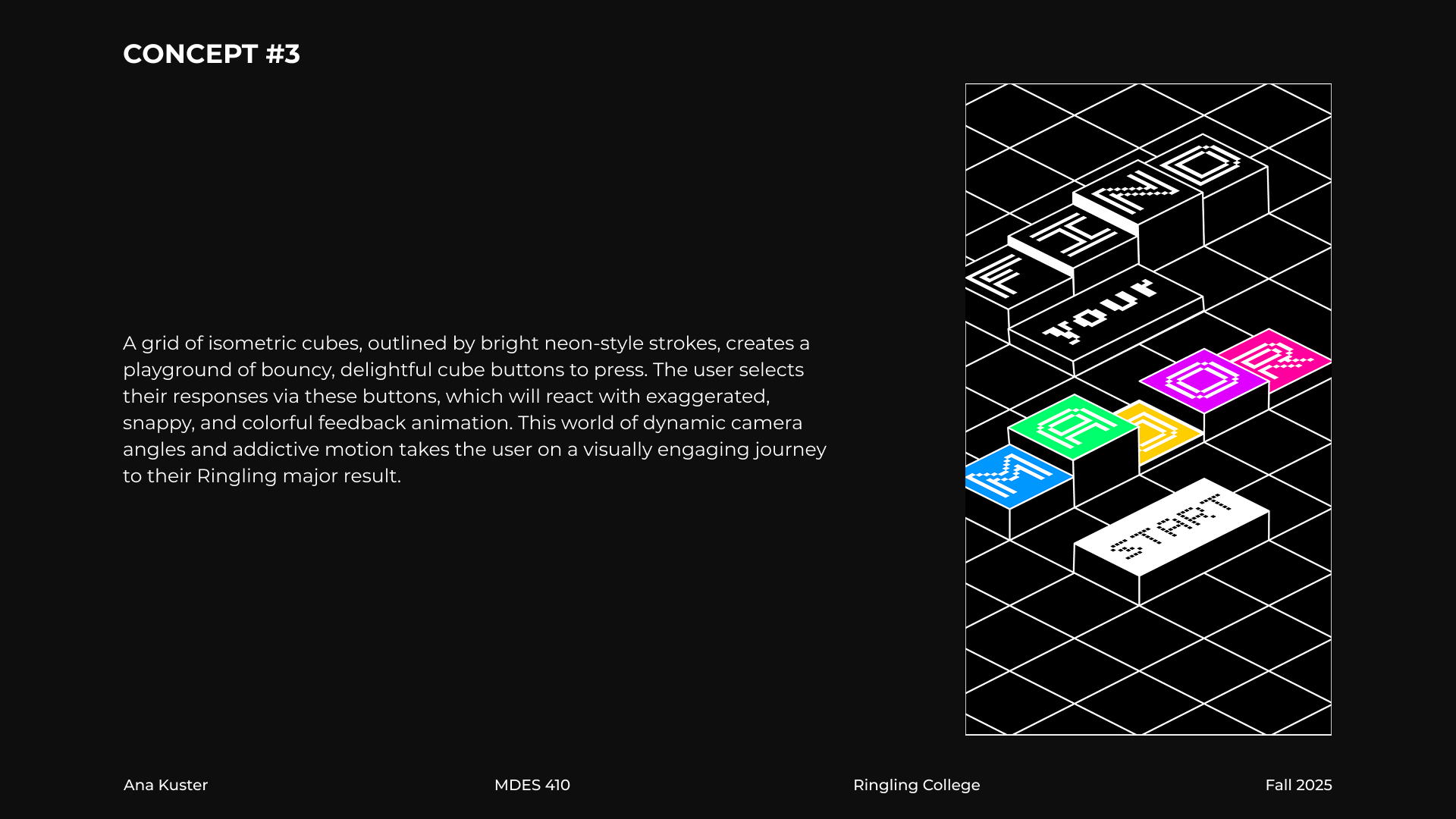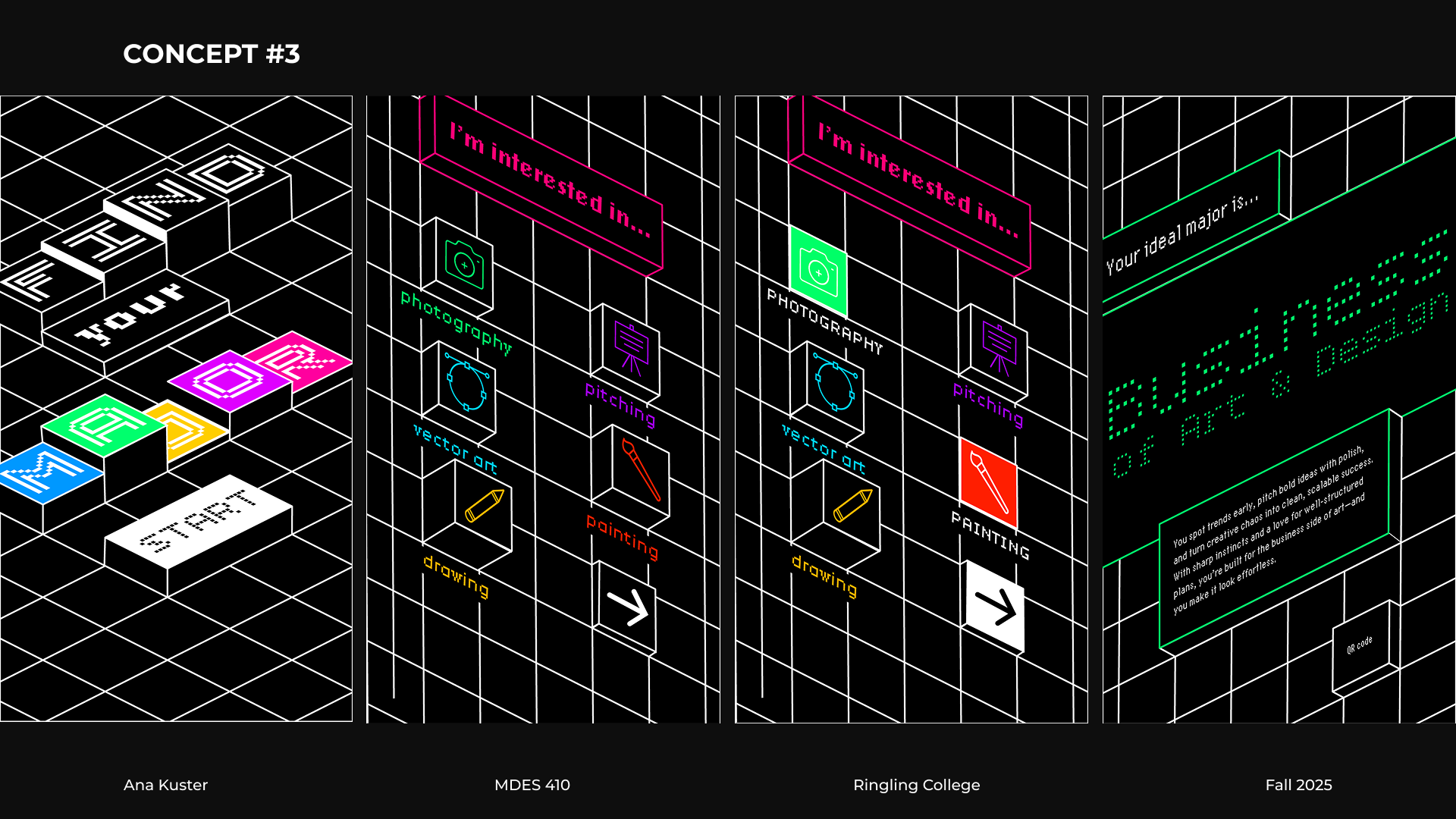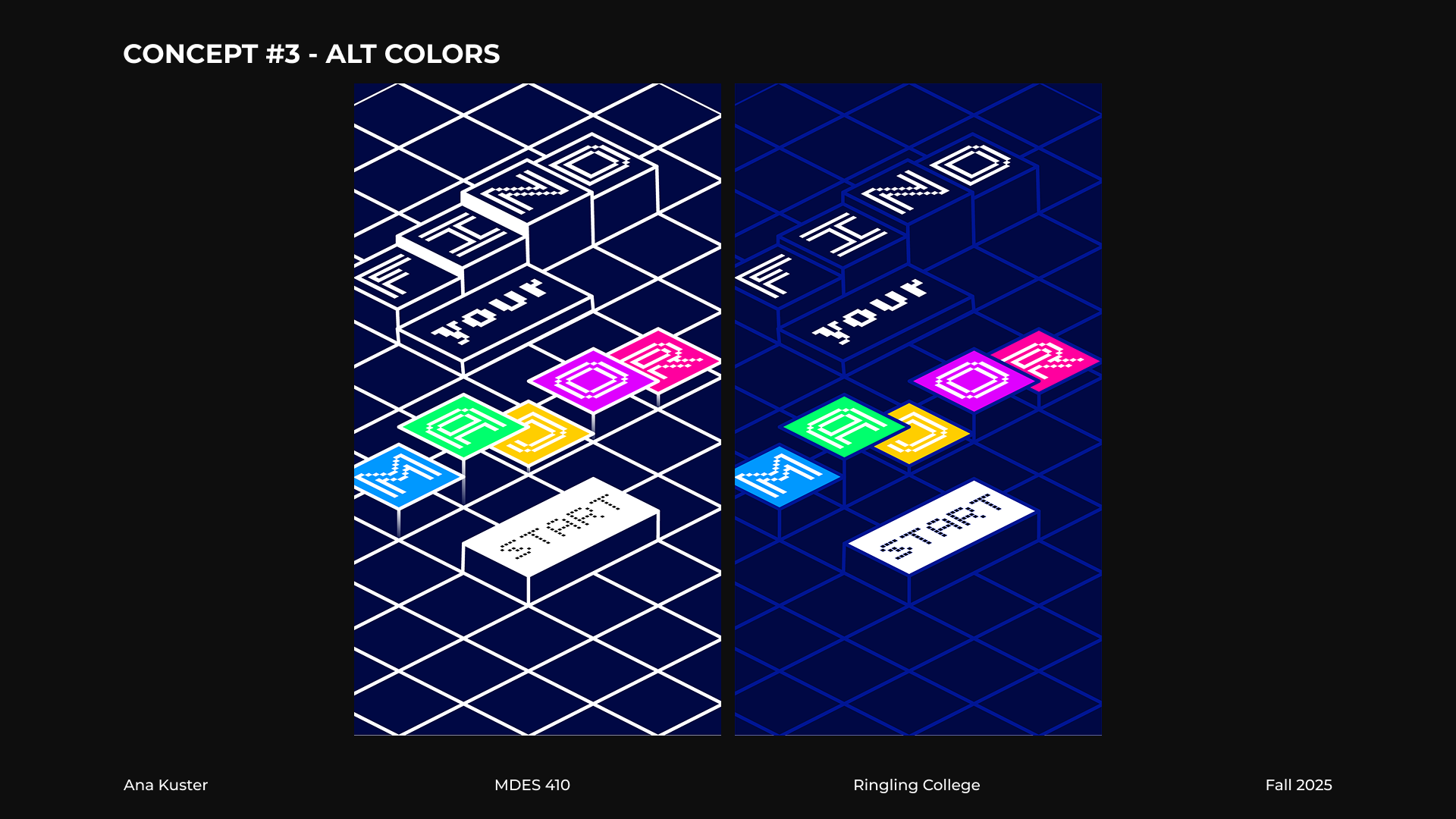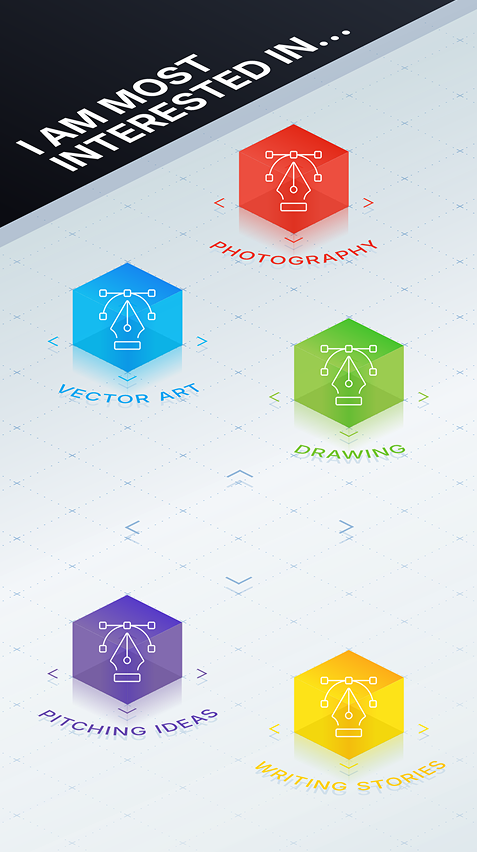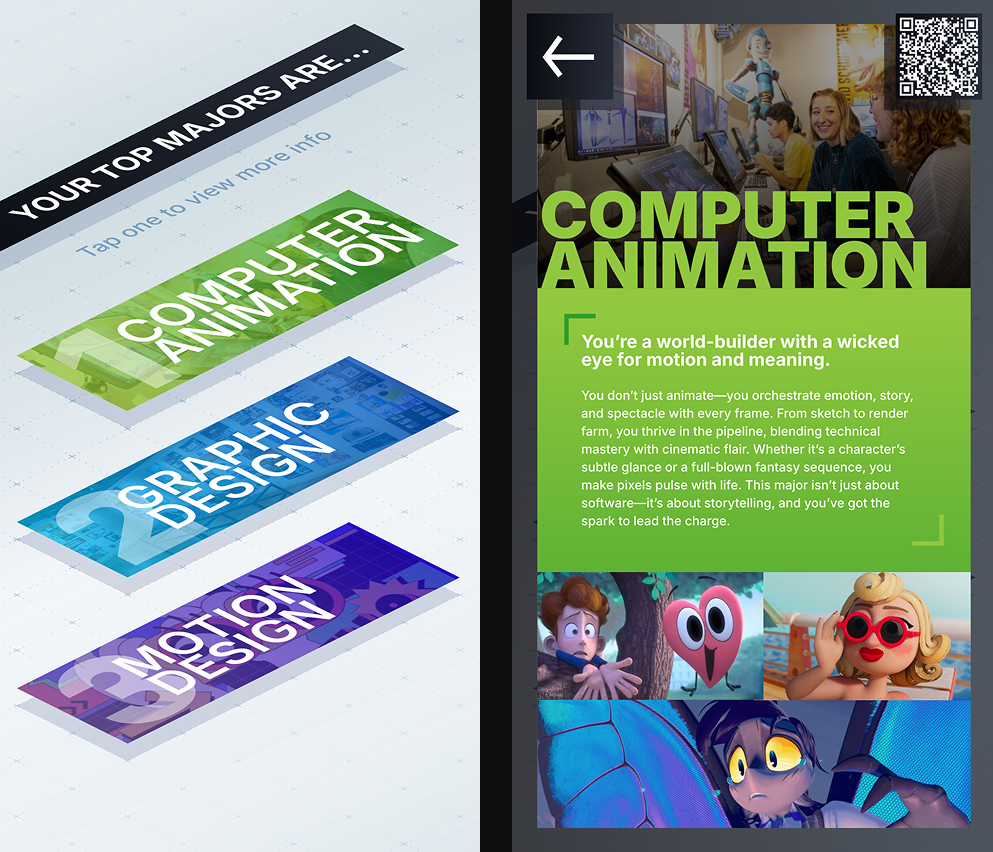When prospective students apply to Ringling College, there is a high likelihood that the major they have entered does not truly align with their personal artistic interests. Many students end up switching to a different major in their first year, which often involves "redoing" their first year, resulting in lost time and money.
This was the problem I needed to solve. The brief called for an interactive experience executed within Rive that would recommend a particular major to a student, depending on their responses to a series of questions. On top of this, the experience should also be very engaging and fun to use. With these goals in mind, I began my design and prototyping phase.
Which Major Is for You?
Interactive Experience
2025
2025

